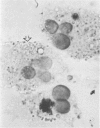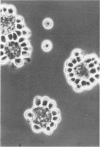Abstract
Various cultural conditions were assessed for their ability to maintain canine peripheral blood monocytes in vitro. Approximately ten days after incubation of peripheral blood leukocytes in Earle's minimum essential medium supplemented with homologous red cell lysates and normal horse serum, virtually a pure macrophage culture was obtained which could then be maintained for about two months. This culture was judged to be pure by surface marker analysis and their phagocytic activity. The number of monocytes could be increased by injecting the dogs with a chloroform extract from Listeria monocytogenes prior to collection of the blood.
Full text
PDF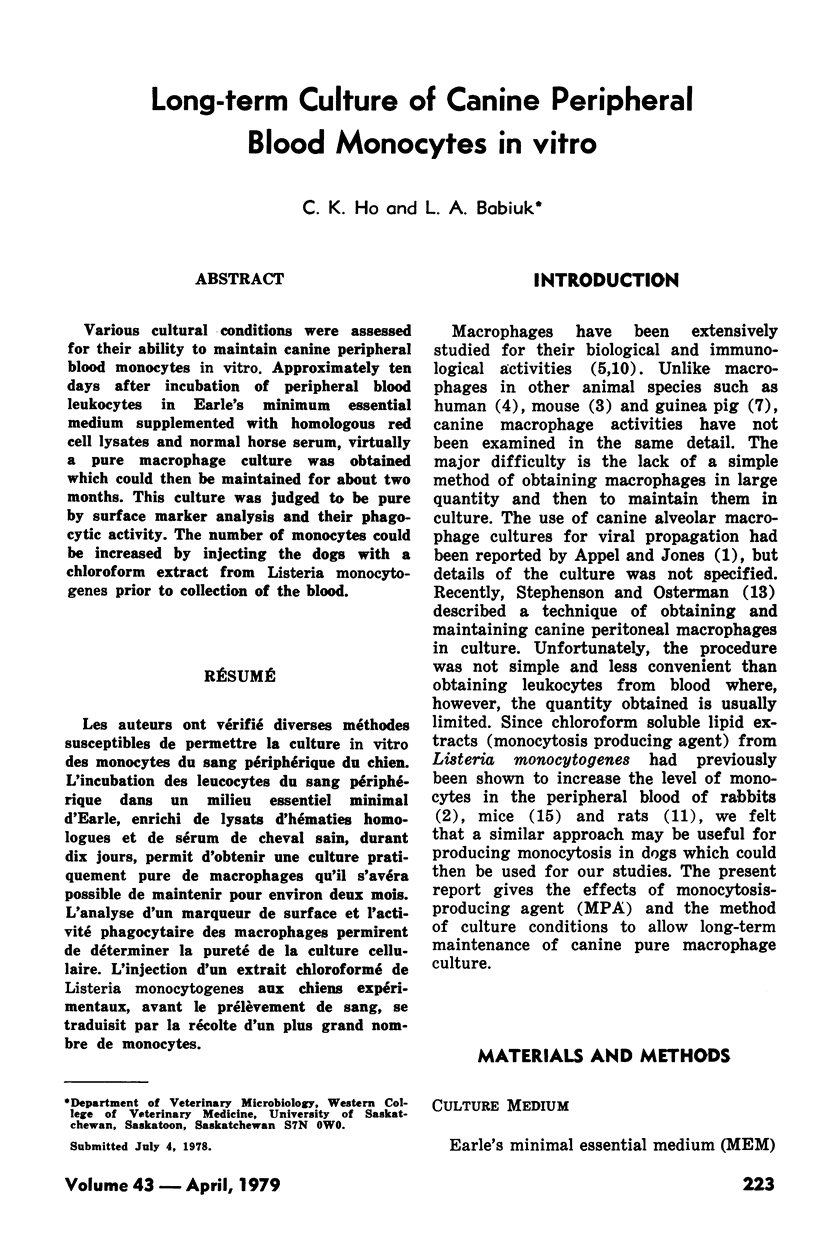
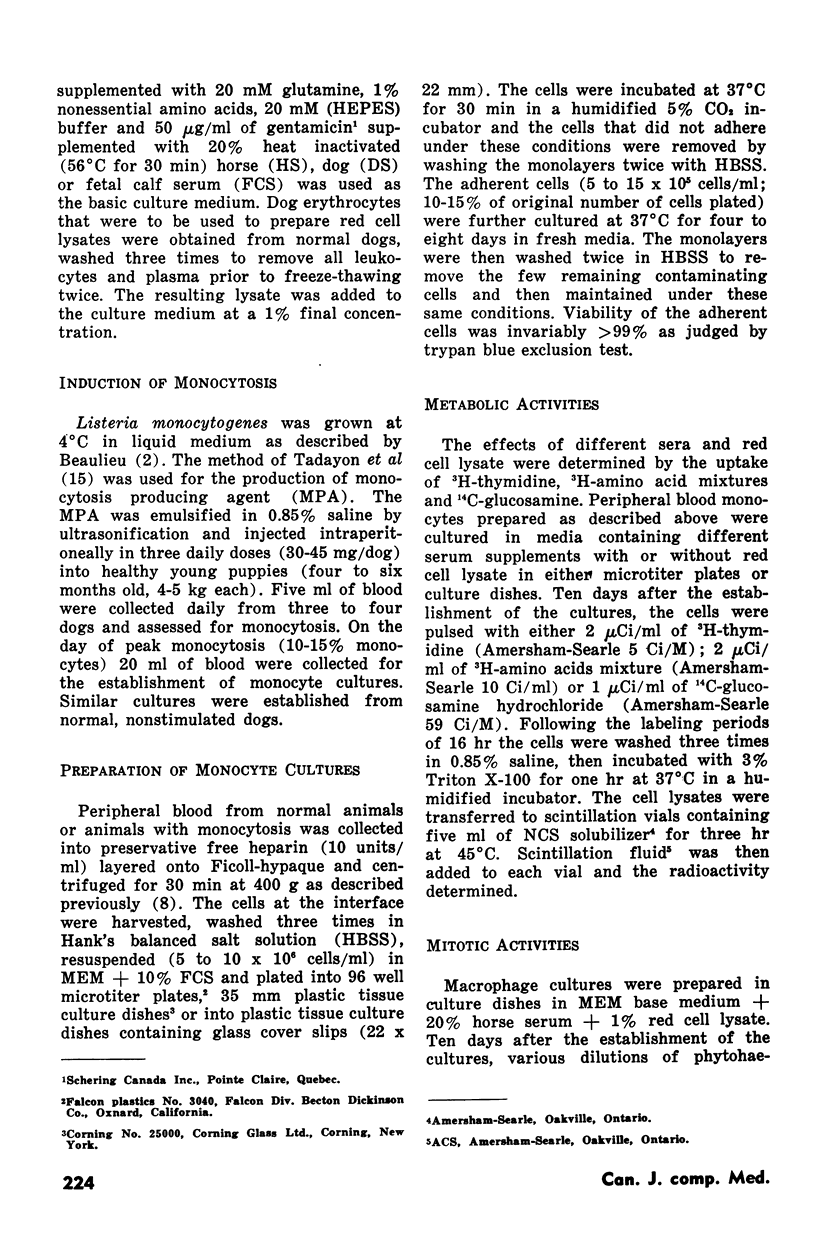
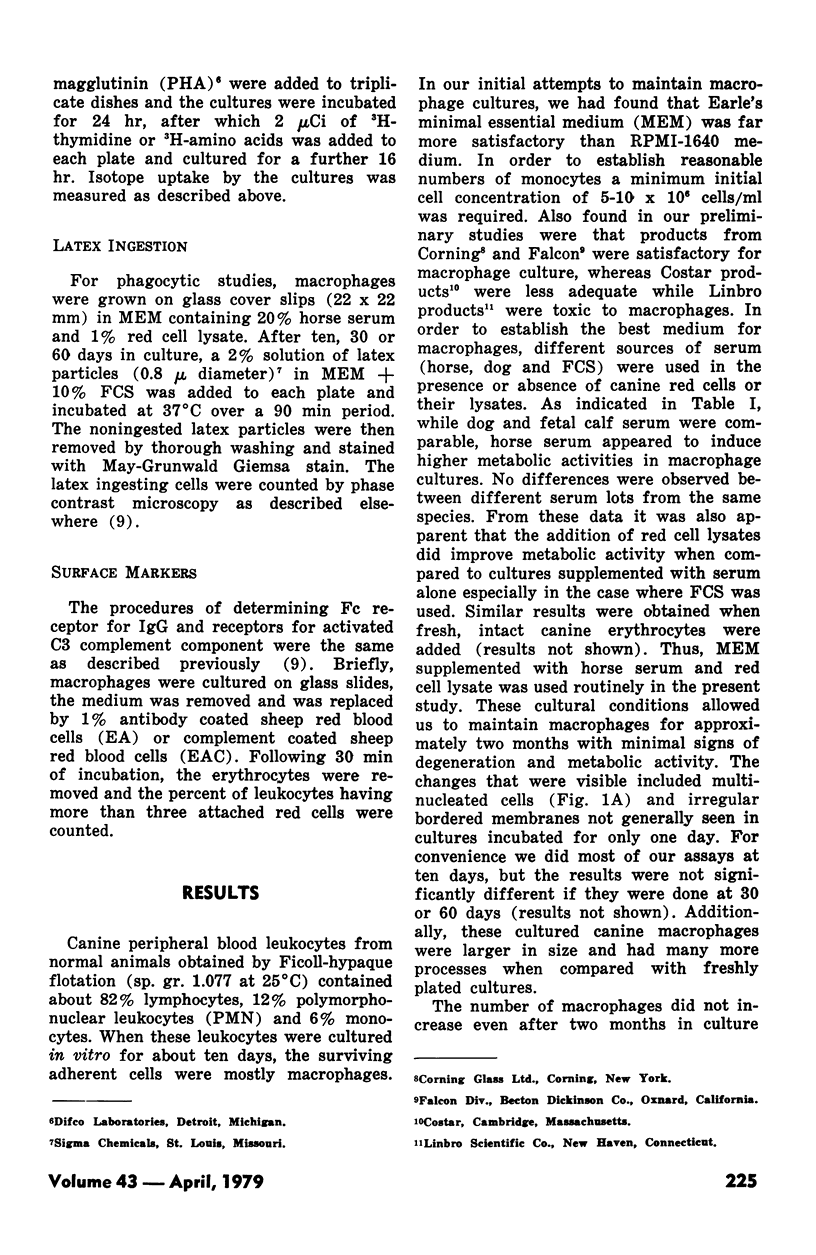
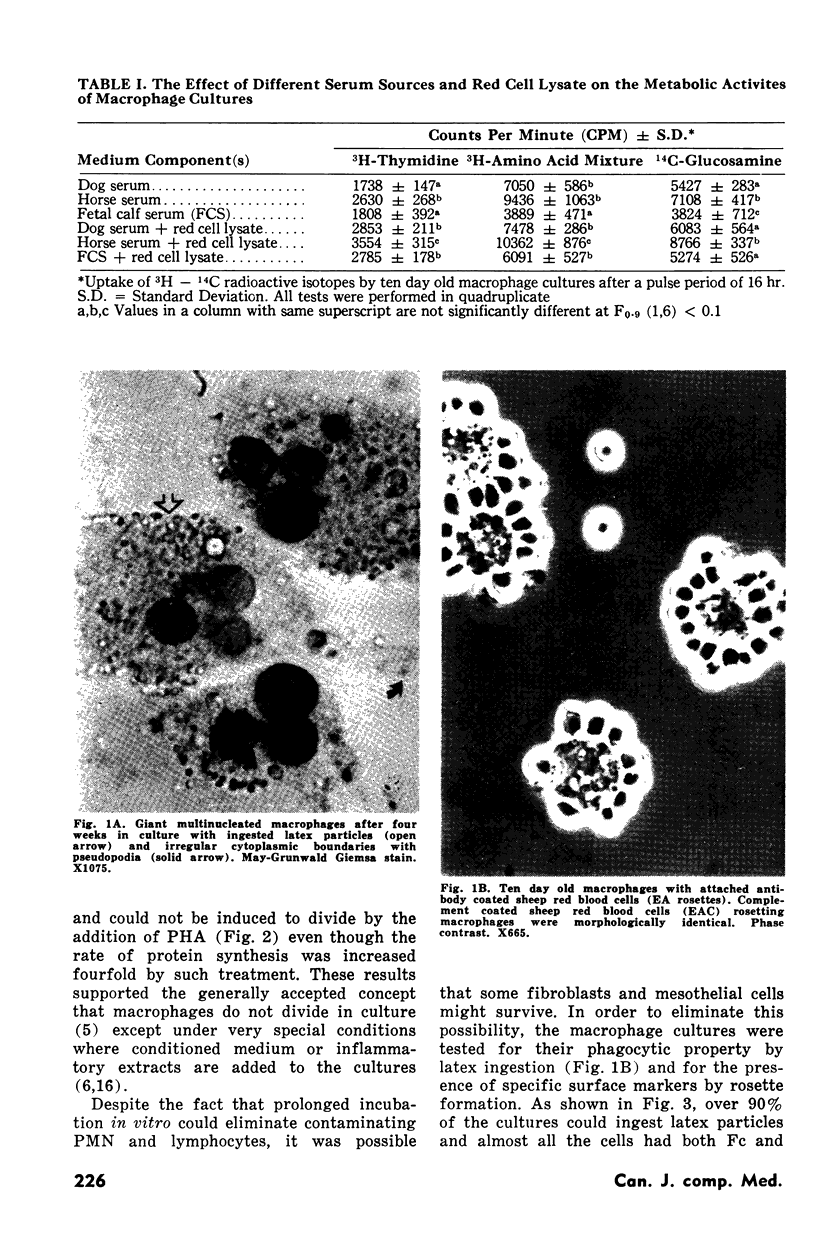
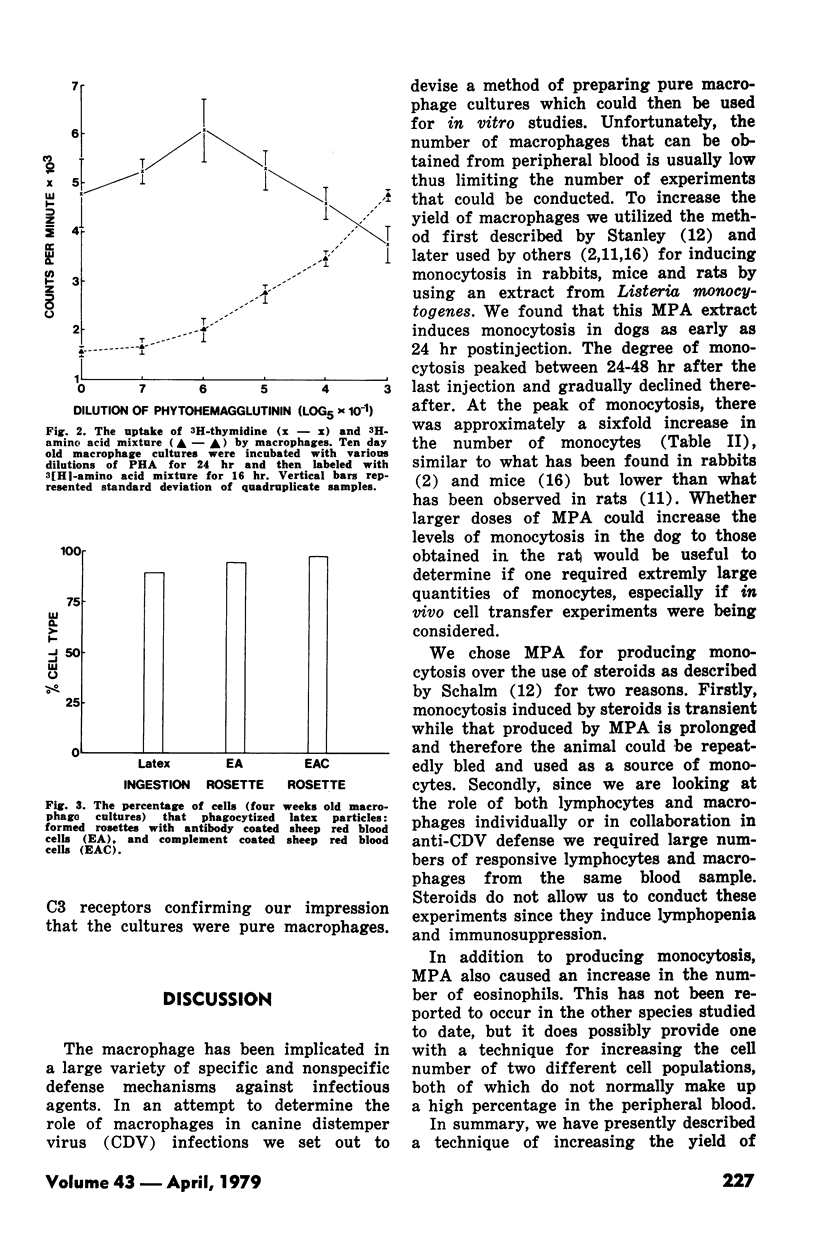
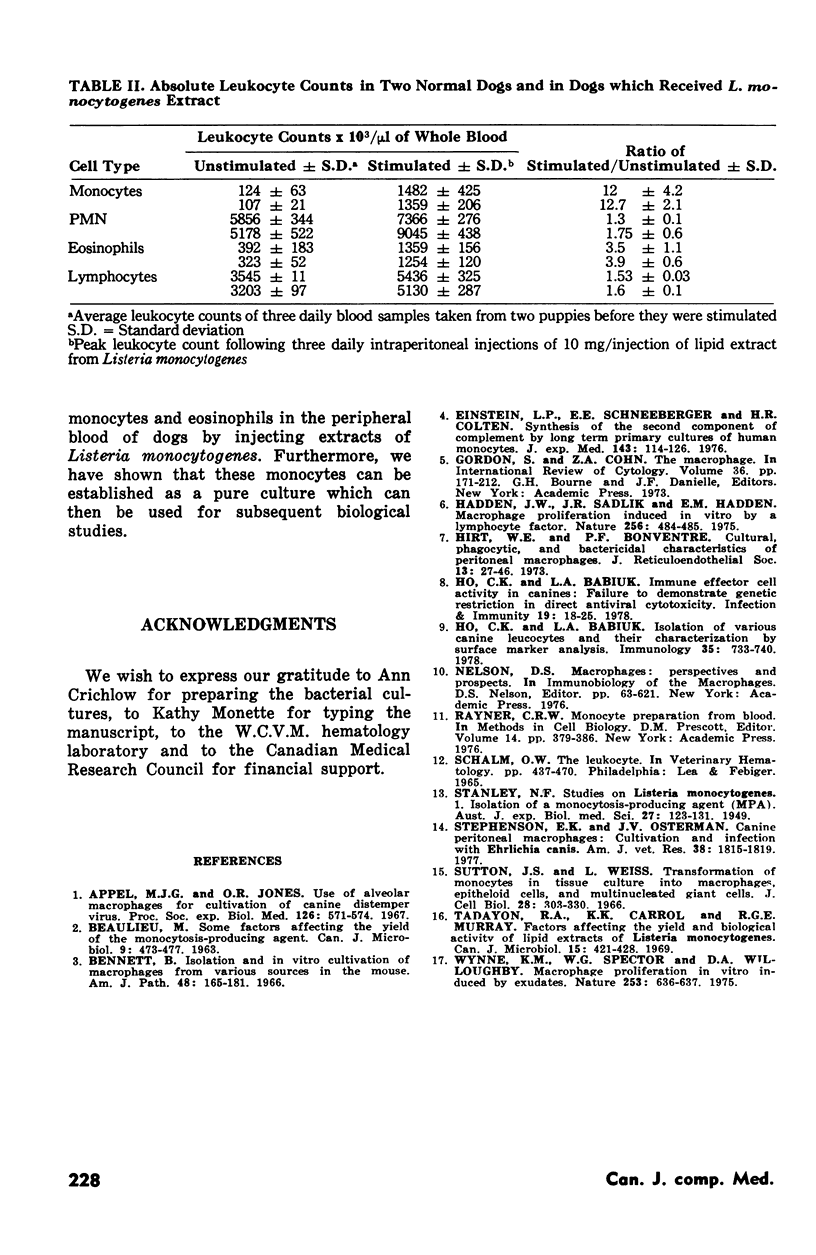
Images in this article
Selected References
These references are in PubMed. This may not be the complete list of references from this article.
- Appel M. J., Jones O. R. Use of alveolar macrophages for cultivation of canine distemper virus. Proc Soc Exp Biol Med. 1967 Nov;126(2):571–574. doi: 10.3181/00379727-126-32509. [DOI] [PubMed] [Google Scholar]
- Bennett B. Isolation and cultivation in vitro of macrophages from various sources in the mouse. Am J Pathol. 1966 Jan;48(1):165–181. [PMC free article] [PubMed] [Google Scholar]
- Einstein L. P., Schneeberger E. E., Colten H. R. Synthesis of the second component of complement by long-term primary cultures of human monocytes. J Exp Med. 1976 Jan 1;143(1):114–126. doi: 10.1084/jem.143.1.114. [DOI] [PMC free article] [PubMed] [Google Scholar]
- Hadden J. W., Sadlik J. R., Hadden E. M. Macrophage proliferation induced in vitro by a lymphocyte factor. Nature. 1975 Oct 9;257(5526):483–485. doi: 10.1038/257483a0. [DOI] [PubMed] [Google Scholar]
- Hirt W. E., Bonventre P. F. Cultural, phagocytic, and bactericidal characteristics of peritoneal macrophages. J Reticuloendothel Soc. 1973 Jan;13(1):27–46. [PubMed] [Google Scholar]
- Ho C. K., Babiuk L. A. Isolation of various canine leucocytes and their characterization by surface marker analysis. Immunology. 1978 Nov;35(5):733–740. [PMC free article] [PubMed] [Google Scholar]
- Ho C. K., Babiuk L. A., Rouse B. T. Immune effector cell activity in canines: failure to demonstrate genetic restriction in direct antiviral cytotoxicity. Infect Immun. 1978 Jan;19(1):18–25. doi: 10.1128/iai.19.1.18-25.1978. [DOI] [PMC free article] [PubMed] [Google Scholar]
- Rayner C. R. Monocyte preparation from blood. Methods Cell Biol. 1976;14:379–386. doi: 10.1016/s0091-679x(08)60497-5. [DOI] [PubMed] [Google Scholar]
- Stephenson E. H., Osterman J. V. Canine peritoneal macrophages: cultivation and infection with Ehrlichia canis. Am J Vet Res. 1977 Nov;38(11):1815–1819. [PubMed] [Google Scholar]
- Sutton J. S., Weiss L. Transformation of monocytes in tissue culture into macrophages, epithelioid cells, and multinucleated giant cells. An electron microscope study. J Cell Biol. 1966 Feb;28(2):303–332. doi: 10.1083/jcb.28.2.303. [DOI] [PMC free article] [PubMed] [Google Scholar]
- Tadayon R. A., Carroll K. K., Murray R. G. Factors affecting the yield and biological activity of lipid extracts of Listeria monocytogenes. Can J Microbiol. 1969 May;15(5):421–428. doi: 10.1139/m69-074. [DOI] [PubMed] [Google Scholar]
- Wynne K. M., Spector W. G., Willoughby D. A. Macrophage proliferation in vitro induced by exudates. Nature. 1975 Feb 20;253(5493):636–637. doi: 10.1038/253636a0. [DOI] [PubMed] [Google Scholar]



